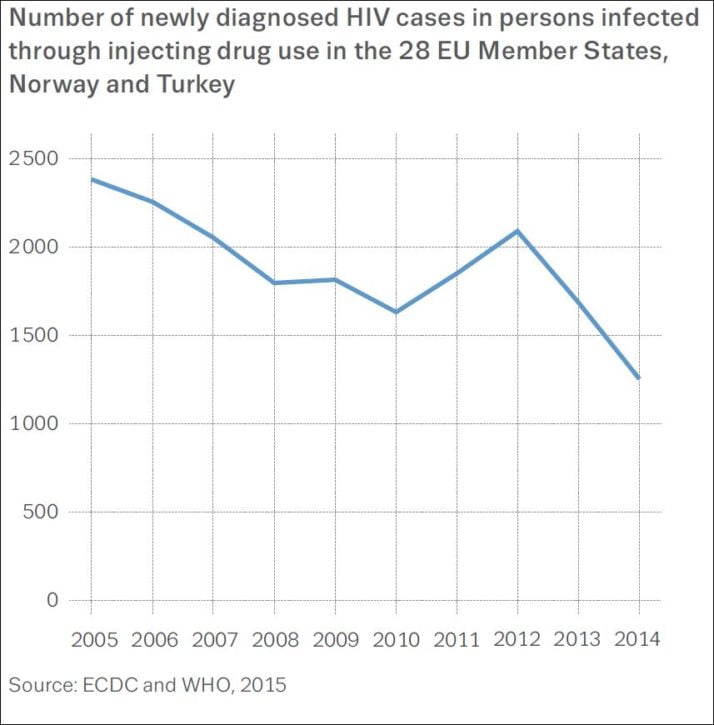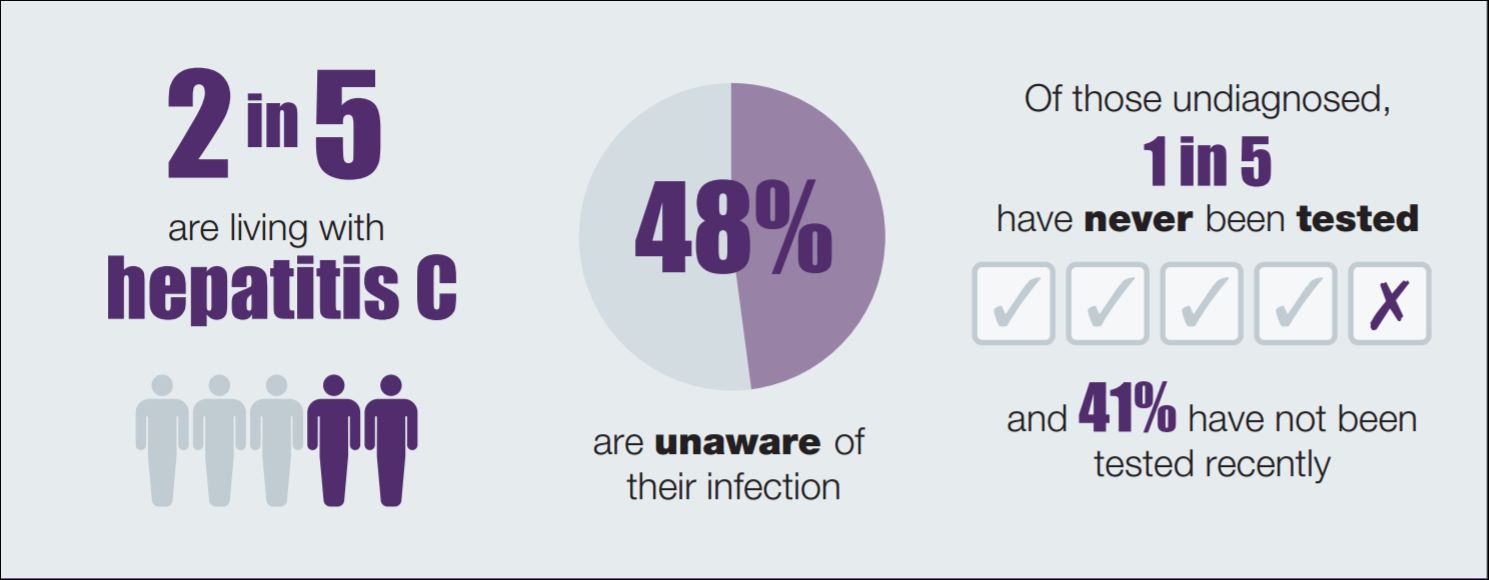Continuing concern about Hepatitis C
This blog post summarises the findings of two recent (November 2016) report on drug-related infectious diseases:
- Drug-related infectious diseases in Europe (European Monitoring Centre for Drugs and Drug Addiction)
- Shooting up: infections among people who injected drugs in the UK, 2015 (Public Health England)
The European situation
The EMCDDA report shows the very high rate of hepatitis C infection amongst injecting drug users across the continent. In sero-prevalence studies among people who inject drugs conducted in 2013–14, HCV antibodies — indicating present or past infection — were found in between 15 % and 84 % of cases, with most studies showing rates in excess of 50 % (see the graphic below).
The high overall level of prevalence is likely to have important long-term consequences, as HCV infection, often worsened by heavy alcohol use, accounts for increasing numbers of cases of liver disease, including cirrhosis and liver cancer, and increasing numbers of deaths, among an ageing population of high-risk drug users.
Many of those with the virus are still undiagnosed, with studies suggesting that in Europe between 24 % and 76 % are unaware of their
infection status.

The report also presents better news about rates of HIV infection. Although HIV infection is preventable through effective public health measures, transmission due to injecting drug use continues in Europe, especially in eastern counties. In the European Economic Area, an overall decline in the transmission of the virus through injecting drug use has been documented, and in 2014 only 4 % of all newly reported HIV diagnoses in these 31 European countries were attributed to injecting.

England and Wales
The PHE report summarises the main local issues:
HIV levels remain low, but risks continue
In the UK, around one in 100 people who inject drugs is living with HIV. Most have been diagnosed and will be accessing HIV care. However, HIV is often diagnosed at a late stage among people who inject drugs. HIV transmission continues among people who inject drugs, and both injecting and sexual risks remain common. The emergence of injecting drug use around or during sex among some groups of HIV positive men who have sex with men is a concern, as is the recent HIV outbreak among people injecting heroin in Glasgow.
Many hepatitis C infections remain undiagnosed
Hepatitis C remains the most common infection among people who inject drugs, and there are significant levels of transmission among this group in the UK. Two in every five people who inject psychoactive drugs are living with hepatitis C and around half of these infections remain undiagnosed. Around one in 20 of those who inject image and performance-enhancing drugs have hepatitis C.
Hepatitis B remains rare, but vaccine uptake needs to be sustained
In the UK, around one in every 200 people who injected psychoactive drugs is living with hepatitis B infection. About three-quarters of people who inject psychoactive drugs report taking up the vaccine against hepatitis B, but this level is no longer increasing. Uptake of the hepatitis B vaccine is much lower among people who inject image and performance-enhancing drugs.
Bacterial infections continue to be a problem
One-third of people who inject psychoactive drugs report having a recent symptom of a bacterial infection. Outbreaks of infections due to bacteria are continuing to occur in this group. Some of these infections are severe and can place substantial demands on the healthcare system.
Changing patterns of psychoactive drug injection remain a concern
The increased injection of a range of stimulants, particularly the recently emerged psychoactive drugs such as mephedrone, is a concern. People injecting stimulants often report higher levels of injecting and sexual risk behaviours.
These findings are helpfully summarised in a PHE infographic published alongside the report:








